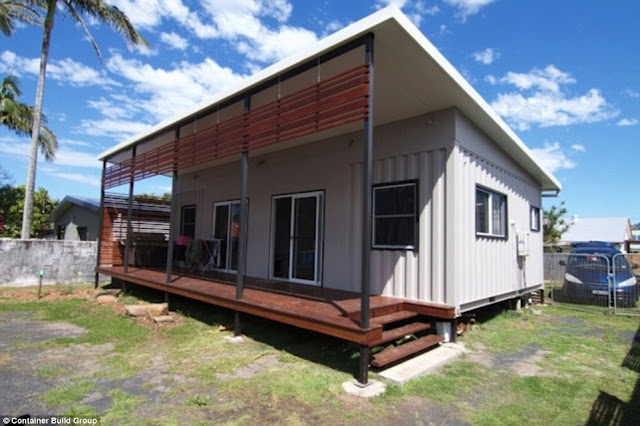When building a house or building, the first thing that must be considered is the safety factor of the building. Likewise by building a house using container materials. Container usage trends for buildings have long emerged. Originally containers or containers were used as temporary workplaces in projects or field work. The container is also easily formed as needed. But with the rise of container-based buildings, the question began to arise whether containers were safe to use as dwellings. According to the Director of Marketing of PT Nebil Wong Group or RumahKontainers.com Nabil Yusuf, a house or building made of safe containers as a residence. Containers do have advantages in their support structures that are designed to carry jumbo size items. This shipping crate has also been constructed to be stacked. "Containers have advantages in the structure, if the cargo can be stacked up to 12 floors.
"One container holds a weight of 3 tons, if 12 stacks means it can withstand a weight of 36 tons," said Nabil to Kompas.com, Saturday (08/04/2018). In fact, containers made from containers are resistant to shocks or cracks due to earthquakes. "Secure. Even anti-cracking and earthquakes. "For the earthquake shock is stronger, if the traditional building is cracked and collapsed, if this only swings, the building is also more awake because it does not crack," said Nabil. Container house owners also don't need to worry about the building going to leak or being eaten by termites. Even if treated properly, containers can last up to 50 years. Nabil revealed, buildings with containers are only enough to be repainted every five years.
This container-based building is resistant to earthquake-caused cracks. (House Containers) Easy to modify The selection of containers as housing materials is also not free from the lifestyle of the people who began to enjoy practical lifestyles. Container houses are also easy to modify, even the owner does not have to knock down the main building if you want to add a room. According to Nabil,
to renovate conventional buildings, sometimes the main structure must be broken down. Unlike container houses which only require the addition of structures in some parts without having to knock down buildings. "If the container house stays connected, it is cut and added to the side then it remains welded," said Nabil.
Another advantage is that the building from the container is easy to move. "Economical, practical, affordable prices. Narrow land areas using containers can be stacked, already made, "Challenges Besides saving, container occupancy is also practical because one container does not consume a lot of land. (Kontainers house) Using containers means that heat is delivered well. During hot days, the metal easily absorbs the sun's heat and increases room temperature. For this reason, building containers must be added with insulation to reduce these effects. Nabil said, container buildings could be given additional layers of glaswool.
Aside from being a material to muffle sound, glaswool also has the ability to reduce heat from the outside. "New gypsum, plywood, or melamine coatings are provided according to consumer needs. The wallpaper is still attached, "said Nabil. Another challenge is that the road in front of the house must be wide enough to transport and install containers on the land provided.
Size also cannot be arbitrary. Basically, containers have three sizes, namely 20 feet, 40 feet, and high cube. So that the building area as much as possible adjusts the size of the container used. The 20 feet container is 6 meters long, 2.4 meters wide, and 2.4 meters high. For 40 feet, it has a length of 12 meters, a width of 2.4 meters, and a height of 2.6 meters. While high cube or 45 feet containers have a length of 13.7 meters, a width of 2.4 meters and a height of 2.9 meters.






